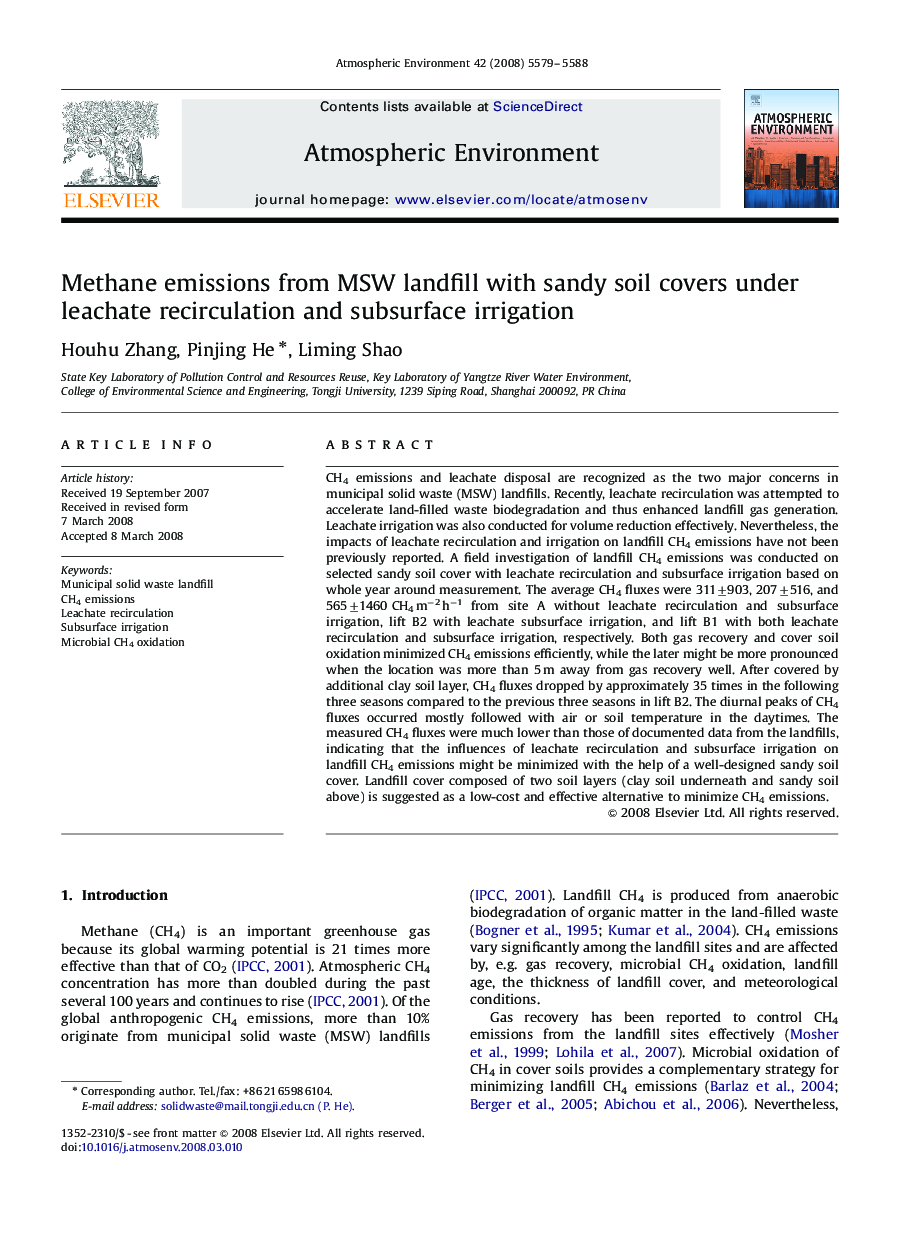| Article ID | Journal | Published Year | Pages | File Type |
|---|---|---|---|---|
| 4442091 | Atmospheric Environment | 2008 | 10 Pages |
CH4 emissions and leachate disposal are recognized as the two major concerns in municipal solid waste (MSW) landfills. Recently, leachate recirculation was attempted to accelerate land-filled waste biodegradation and thus enhanced landfill gas generation. Leachate irrigation was also conducted for volume reduction effectively. Nevertheless, the impacts of leachate recirculation and irrigation on landfill CH4 emissions have not been previously reported. A field investigation of landfill CH4 emissions was conducted on selected sandy soil cover with leachate recirculation and subsurface irrigation based on whole year around measurement. The average CH4 fluxes were 311±903, 207±516, and 565±1460 CH4 m−2 h−1 from site A without leachate recirculation and subsurface irrigation, lift B2 with leachate subsurface irrigation, and lift B1 with both leachate recirculation and subsurface irrigation, respectively. Both gas recovery and cover soil oxidation minimized CH4 emissions efficiently, while the later might be more pronounced when the location was more than 5 m away from gas recovery well. After covered by additional clay soil layer, CH4 fluxes dropped by approximately 35 times in the following three seasons compared to the previous three seasons in lift B2. The diurnal peaks of CH4 fluxes occurred mostly followed with air or soil temperature in the daytimes. The measured CH4 fluxes were much lower than those of documented data from the landfills, indicating that the influences of leachate recirculation and subsurface irrigation on landfill CH4 emissions might be minimized with the help of a well-designed sandy soil cover. Landfill cover composed of two soil layers (clay soil underneath and sandy soil above) is suggested as a low-cost and effective alternative to minimize CH4 emissions.
